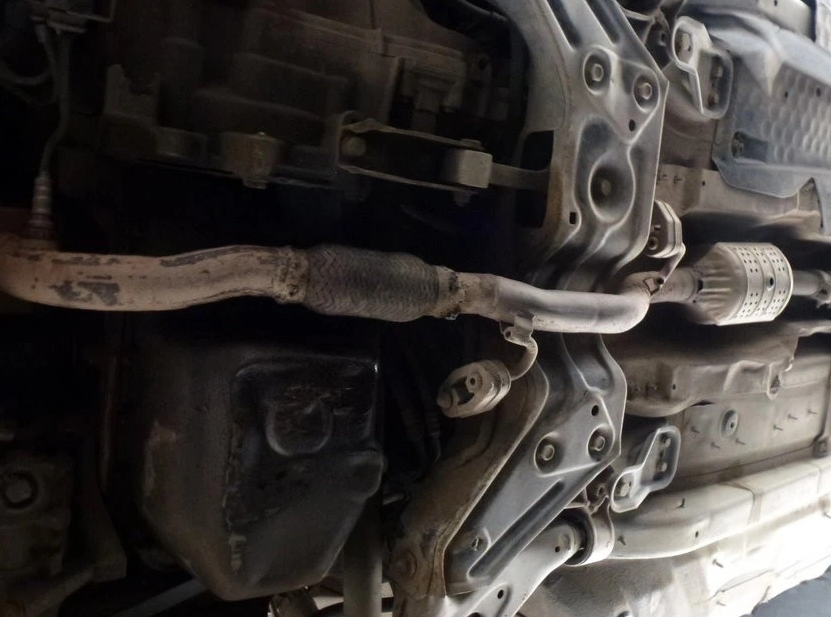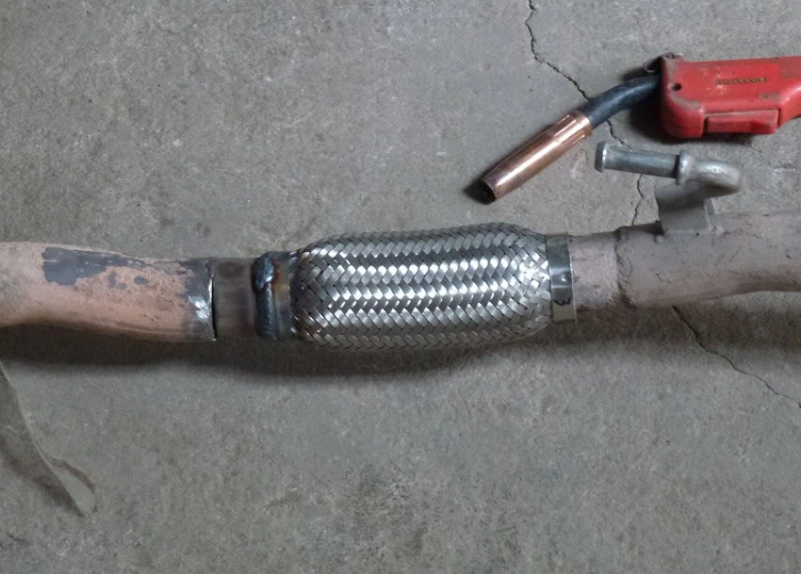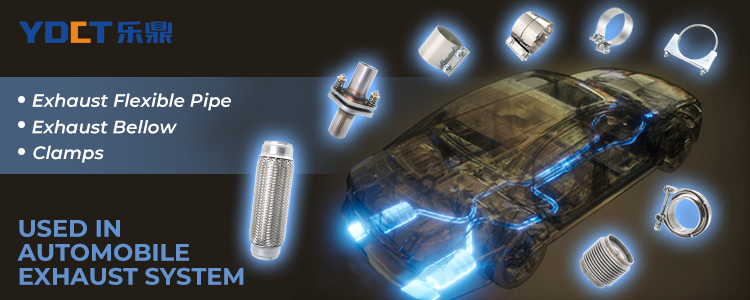Introduction
The exhaust flex pipe is a crucial component of your vehicle's exhaust system, designed to absorb vibrations and movements generated by the engine. Regular maintenance and timely replacement of the exhaust flex pipe ensure optimal vehicle performance and prevent further damage to the exhaust system.If you find that the starting noise of the car becomes louder, it is likely that the exhaust flex pipe connection is leaking and needs to be replaced.This article will provide a detailed step-by-step guide on replacing an exhaust flex pipe, emphasizing the importance of using high-quality materials such as stainless steel flexible exhaust pipes and proper installation techniques.
Tools and Materials Needed
To replace your exhaust flex pipe, gather the following tools and materials:
1. Wrenches or sockets (various sizes)
2. Reciprocating saw or cutting wheel
3. Jack and jack stands
4. Safety glasses and gloves
5. New exhaust flex pipe (preferably stainless steel flexible exhaust pipe)
6. Exhaust clamps or couplings
7. Exhaust sealant
8. welding gun
*If your exhaust flex pipe is connected by welding, it needs to be welded back after cutting, if it is through the clamp then it is not necessary, just tighten the original clamp again, of course, if the clamp is loose, it is still recommended to replace the new clamp. We also offer tailpipe special clamps with heat and corrosion resistance and strong clamping force, which is much easier than welding.

Step-by-Step Replacement Guide
1. Prepare the Vehicle
Safety First: Ensure the vehicle is on a flat surface. Engage the parking brake and use wheel chocks.
Raise the Vehicle: Use a jack to lift the vehicle and secure it on jack stands, providing safe access to the exhaust system.
2. Locate the Damaged Flex Pipe
Visual Inspection: Identify the damaged exhaust flex pipe. Look for signs of wear, cracks, or corrosion.
Prepare for Removal: If the flex pipe is welded, use a reciprocating saw to carefully cut it out. If it’s clamped, simply loosen the clamps using appropriate wrenches.

3. Remove the Old Flex Pipe
Cutting the Pipe: If necessary, cut the old flex pipe using a reciprocating saw or cutting wheel. Ensure you cut straight to facilitate easier installation of the new pipe.
Disconnecting Clamps: If clamps are used, loosen them completely and slide the old pipe out.
*It is recommended to remove the entire exhaust system pipe, so as to facilitate the overall installation and investigation.

4. Prepare the New Flex Pipe
Choosing the Right Pipe: Select a new exhaust flex pipe that matches the specifications of your vehicle. A stainless steel flexible exhaust pipe is recommended for its durability and resistance to corrosion.
Fitment: Ensure the new pipe is the correct length and diameter. If required, trim the pipe to fit your exhaust system properly.

5. Install the New Flex Pipe
Align the Pipe: Position the new exhaust flexible pipe in place. Align it with the existing exhaust system.
Secure with Clamps: Use exhaust flexible pipe couplings and clamps to secure the new pipe. Tighten the clamps evenly to prevent leaks.
Seal the Joints: Apply exhaust sealant around the joints to ensure a tight seal and prevent exhaust leaks.
We recommend using double-layer exhaust flex pipe or exhaust flex pipe with extended connection pipes. These types of exhaust hoses are more heat-resistant and corrosion-resistant, and the added connection pipe makes welding easier.

6. Check the Installation
Visual Inspection: Ensure all connections are secure and the pipe is properly aligned.
*The interface needs to be coated with some glue and then installed with the interface pad to prevent the interface from leaking after loading. Air leakage will also feel the car exhaust smell serious.Load the car to start the engine check, no air leakage is completed. Other parts of the clamp should also be coated with glue, otherwise in the future use of air leakage leakage part of the winter seepage that part will soon corroded.
Then Install the exhaust system components back in the way they were originally disassembled.
Lower the Vehicle: Carefully lower the vehicle off the jack stands.
Test the System: Start the engine and listen for any unusual noises. Check for exhaust leaks and ensure the new flex pipe is functioning correctly.


Special Features of Our Exhaust Flex Pipes
Our exhaust flex pipes come with integrated couplings and corresponding exhaust clamps for easy installation. These features make the replacement process simpler and more efficient, ensuring a secure fit and optimal performance. Whether you need an auto exhaust flexible pipe or a car exhaust flex bellow, our products are designed to meet your vehicle's needs.
* High-Quality Materials: Our flex pipes are made from stainless steel 304,201,409, providing excellent durability and resistance to corrosion.
* Easy Installation: The included exhaust flexible pipe coupling and clamps simplify the installation process, allowing for a secure and leak-free fit.

Conclusion
Replacing an exhaust flex pipe is a manageable task with the right tools and materials. Regular inspection and timely replacement of worn-out flex pipes can enhance your vehicle's performance and longevity. By using high-quality stainless steel exhaust pipes and proper installation techniques, you can ensure a reliable and efficient exhaust system. Always consider consulting a professional mechanic if you are unsure about any step in the replacement process.











